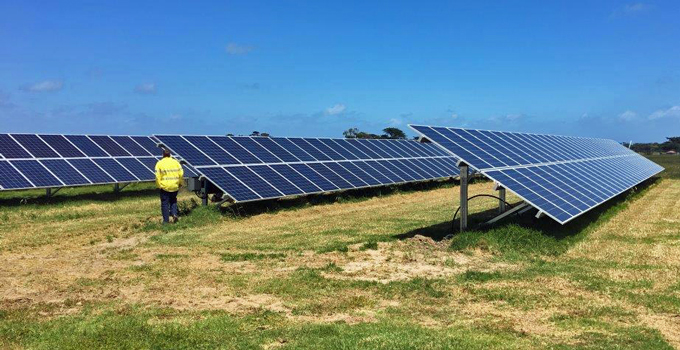THOUGHT LEADERSHIP
Planning for solar success
Planning regimes for large-scale infrastructure are rarely simple. Investing time and energy in planning for project approvals makes it more likely that your solar project will succeed.

In this third part of our series of articles on overcoming potential roadblocks to solar developments, we take a closer look at how to navigate the planning environment for utility-scale solar PV energy projects.
Unlike domestic solar installations, which are often exempted from needing planning approval, larger utility-scale solar installations are likely to fall within the general planning requirements for renewable energy, which can significantly restrict the areas in which they can be considered.
The increased flexibility of the size and location of solar installations, and their ability to match the needs of users and supplement the capacity of the network, means that demand for solar is likely to rise in areas close to urban development. Solar installations servicing schools and universities, commercial development clusters or even specific neighbourhoods are set to become more attractive. The solar farm may become the new hobby farm.
However, due to the current constraints of planning systems in several Australian jurisdictions, renewable energy developments of this scale on many of these sites may be prohibited or dealt with inconsistently. Development control systems across Australia are generally not set up to facilitate development; rather, they control impacts. They are not proactive and lag behind the market, struggling to respond to rapidly emerging technologies and changing market demands. They can be frustrating to navigate and hard to change, which sometimes makes obtaining approvals hard work.
Is it easier to plan for a solar farm?
The planning system tends not to differentiate between various forms of renewable energy generation, constraining all forms due to the perception and experience of those forms with greater perceived impacts (such as wind farms).
Compared with wind farms, solar farms are less likely to encounter concerns about potential impacts on human health, visual amenity, birds and bats, or noise levels and have fewer physical constraints on location. Although solar developments are likely to have less visual impact than wind farms, this will still be an important issue to consider, as will glare and the area of ground coverage. High ground coverage means more potential impact on existing vegetation and less opportunity for complementary land uses.
While solar developments have more flexibility than some other forms of renewable generation to respond to, and avoid, local constraints, many of the important siting requirements are common to all renewable developments, such as the essentials of grid connection and construction access.
A particular consideration for large-scale solar developments is that large areas of flat land are often located in areas outside of council jurisdiction, which are state-owned and can be encumbered by existing leasing arrangements. More remote areas have greater potential to involve existing Native Title rights.
Solar developments have the potential to re-use degraded sites, such as mine sites which are no longer viable, and can complement the existing management and rehabilitation regime for these sites while also offering long-term energy solutions.
Navigating the planning requirements
The planning system is complex, and its potential impact on the cost, timeframe and overall success of your project should never be underestimated. Approvals for solar developments are not necessarily more complex than for other renewable energy developments, but some aspects will differ and the specifics of your particular project need to be taken into account.

As with all large-scale infrastructure development, comprehensive regulatory mapping at an early feasibility level is essential to understand what approvals are likely to be required and where any dependencies exist. Critical approval paths, roadblocks, timeframes and likely information requirements can be estimated and guide stakeholder discussion.
Depending on the scale, location and potential impacts of the project, approvals may be required at the Commonwealth level (through the operation of the Environmental Protection and Biodiversity Conservation Act 1999), the state level (through the implementation of state environmental protection legislation), and the local level (through the implementation of a local development control plan or planning scheme).
Once the approval requirements are confirmed, detailed technical studies are essential for clearly demonstrating that the issues are understood and that the development (and any mitigation or management measures) is appropriate and effective.
The application documentation should be targeted to match and address the requirements of the relevant development control document drawing on the conclusion of the technical studies. It should include both a summary of the proposal that identifies the key issues and mitigation measures, and the detailed technical studies which underpin the planning assessment.
When permits are issued, it is usual for there to be a number of conditions requiring further actions or additional documentation to be submitted. Planning for these requirements is essential, as noncompliance can result in action by the responsible authority or, in some cases, lapsing of the permit.
Ultimately, your best chance of planning success is through fully exploring and understanding the development control provisions, permits, consents and the level of assessment that are required, obtaining high-quality and comprehensive specialist studies, and keeping a watchful eye on any project-specific hurdles.
If you would like to find out more about how Entura can help you overcome planning roadblocks for your solar development, contact Silke Schwartz on +61 407 886 872 or Patrick Pease.
MORE THOUGHT LEADERSHIP ARTICLES
November 30, 2016






